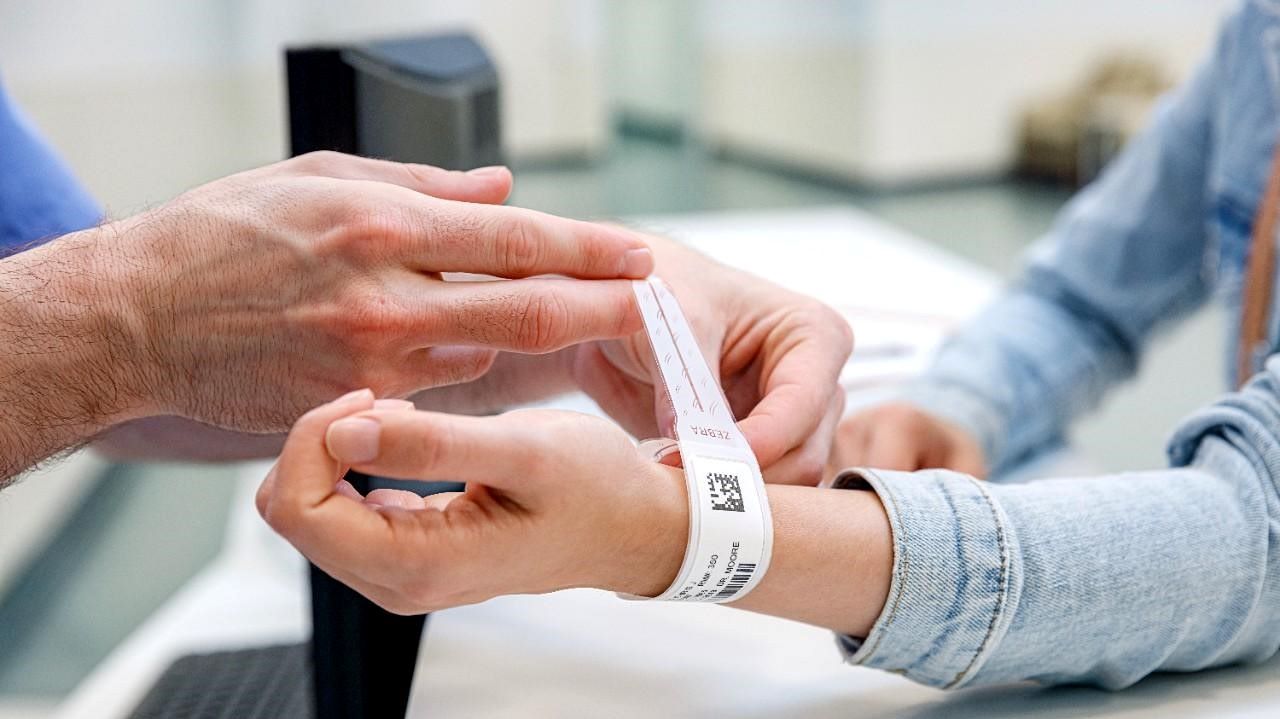
Medical alert bracelet is one of the key tools for medical professionals to identify patients and eliminate clinical errors. Patients must have medical id bracelets on constantly while admitted in a healthcare facility. To ensure patient safety, it is important that they are verified before doctor’s examination, therapy prescription, drug administration, patient preparation for clinical tests and before blood transfusions. Free medical alert bracelet also helps recognize patients when moving them to and from operating theaters, between different wards and for administration purposes.
Medical alert bracelets can reduce preventable medical errors by helping health organizations identify the “Five Rights”–right patient, right medication, right dose, right time, and right method of administration. Poor quality, incorrect or the lack of wristbands can lead to many unwanted situations.
A medical ID bracelet is a wristband or bracelet engraved with important medical information about the wearer. Medical id jewelry or stylish medical alert bracelets can ensure accurate information is always available. Once emergency responders can consistently, accurately identify the right patient with medical ids, many improvements can follow. Medical alert bracelets improve the effectiveness of five rights checks for drug administration and provide an environment where all patients’ safety is enhanced.
Medical alert bracelets play a vital role in patient identification, medication administration, and communication among healthcare providers. Some insurance providers may cover the cost of a medical alert bracelet if it’s deemed medically necessary by a health care professional. They can help trigger medical alert systems and first responders can quickly identify at-risk patients and decide how to treat patients on the spot.
Increasing patient safety yields higher revenue and increased profitability. Hospitals and healthcare organizations can be benefitted by implementing a simple, affordable process of providing medical id bracelet to all patients.
Medical alert jewelry can come in various materials and designs. Among them, the few most practical pieces are Tyvek and vinyl medical wristbands available at 24hourwristbands.com. To alert people of the potentially life-threatening conditions, these medical emergency bands will come handy during emergency situations.
Made from 100% medical grade silicone (non-toxic and non-allergenic), our wide selection of medical alert bracelets are long lasting and produced with silk screen printing technology or are engraved and injected with colors. These wristbands are a great alternative to metal lockets or bracelets because people with metal or different allergies can easily use them. With the right information, these medical alert jewelry can alert most medical alert systems during in medical emergency.
When ordered in bulk, these medical alert bracelets are a more affordable option for hospitals and healthcare organizations. Hospitals can provide these bracelets to patients so that doctors, caregivers or first responders can take the correct action according to the patient’s health. They are color-coded according to the state hospital standards as Allergy Alert, DNR, Fall Risk, Latex Allergy, and Limb Alert categories.
Here are some key strategies to enhance patient safety with medical ID bracelets:
Accurate Patient Identification:
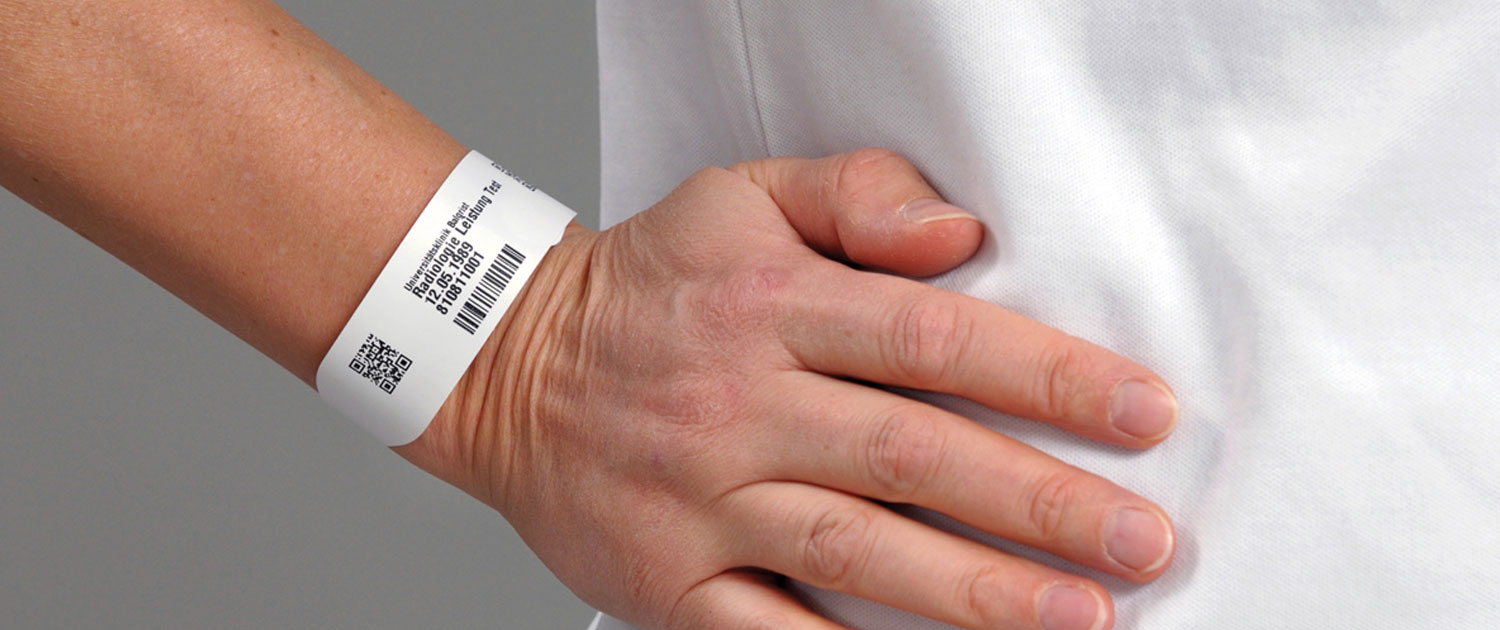
For accurate patient identification, it must be ensured that medical alert bracelets are applied to patients immediately upon admission. Hospitals can use unique patient identifiers like name and date of birth to prevent misidentifying someone. Medical wristbands can use barcodes or RFID technology to facilitate electronic identification and reduce human errors.
Standardized color-coding system:

Healthcare organizations must establish standardized protocols for medical alert bracelet design, color-coding, and information layout to prevent confusion. Color-coded medical alert bracelets can be effective to prevent medical errors. First responders and other medical professionals can glance at the medical id and determine the most important information about the patient in an emergency.
Using a consistent color-coding system helps guide medical staff when they are making quick decisions. Here are some possible colors and what they could indicate:
Red – do not resuscitate (DNR)

Purple – allergy to latex
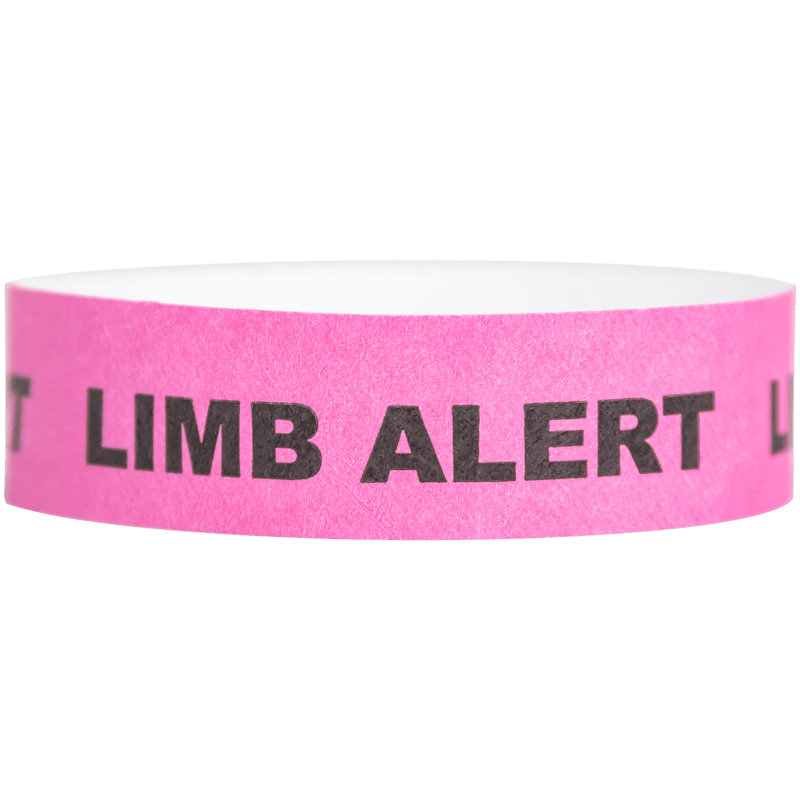
Blue – allergy to something other than latex

Yellow – restricted extremity
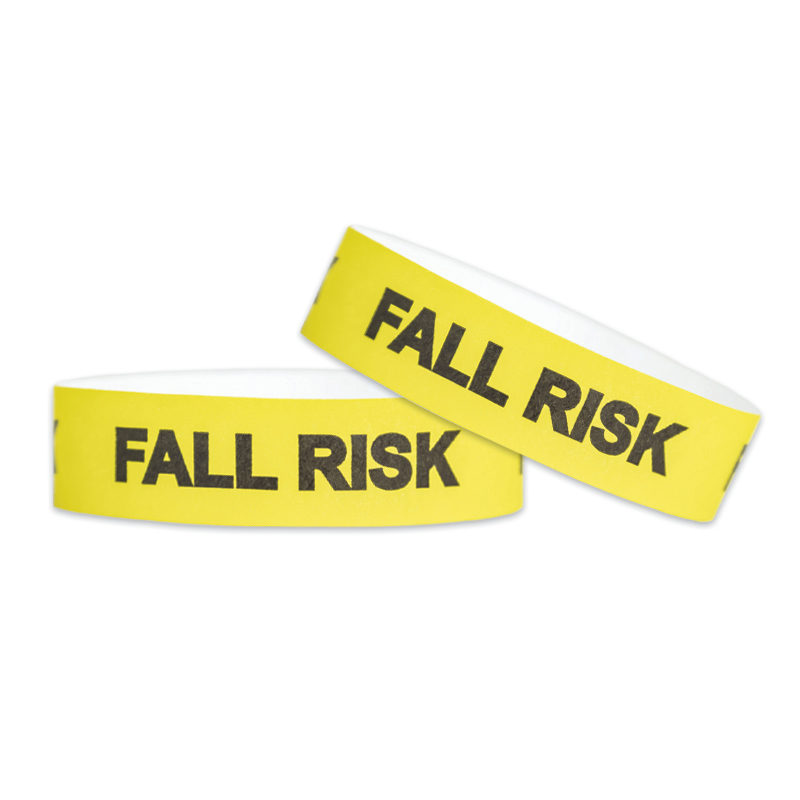
Emergency services also need to have some flexibility for customized wristbands for patient specific needs like allergy alerts, medical condition like diabetes, medication or any other details.
Some allergy alert bracelets in vinyl are available at 24hourwristbands.com.
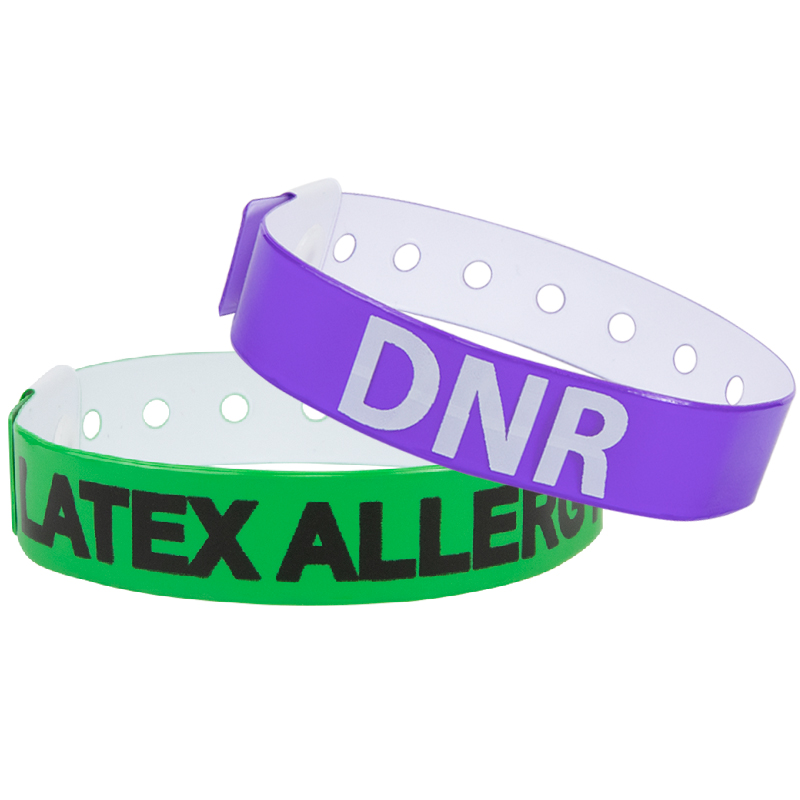
Easy to read labels:
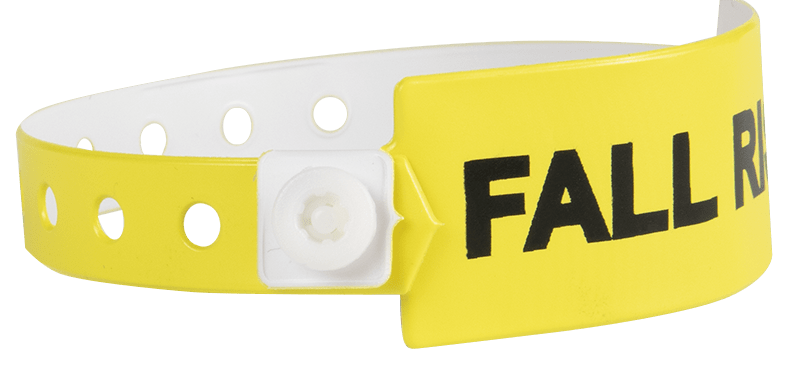
Medical alert bracelets must have simple, clear labels to increase patient safety. Hospitals can move along patients swiftly and accurately if the necessary information on bands are clearly visible. This reduces the chances of making fatal clinical errors by first responders.
Medication Administration Safety:
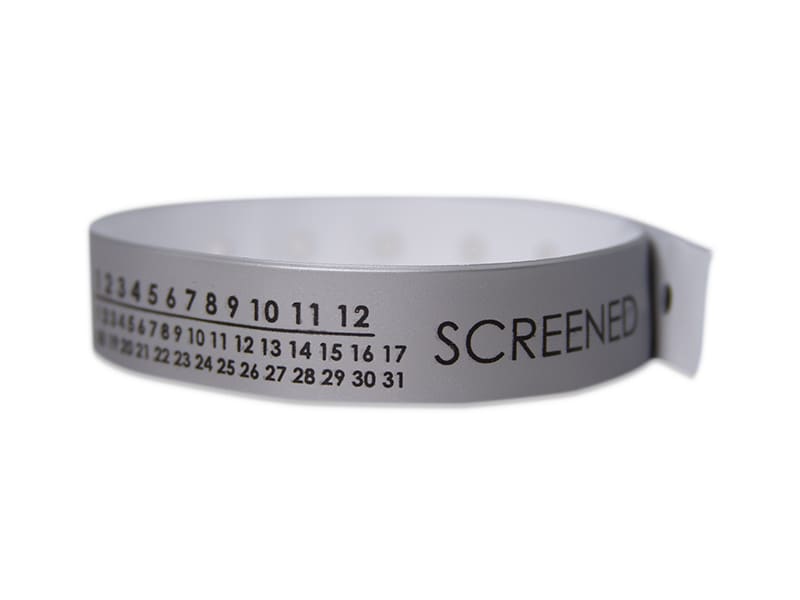
Medical alert bracelet can indicate patient allergies, medical conditions, and medication history to medical professionals. This can prevent wrong medications being administered and create an adverse reaction. Printing barcodes on Tyvek or vinyl wristbands can also help verify patient identity and medication accuracy during administration.
Fall Risk Patients:
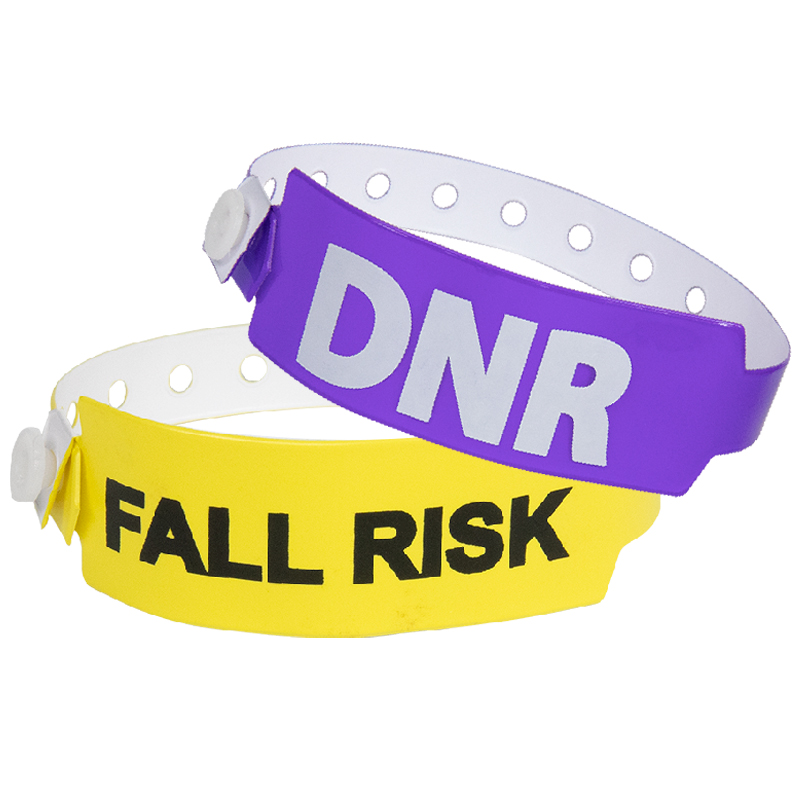
Color coded medical alert bracelet can help identify patients who are at risk of falls easily and from a distance.
Our in stock ‘Fall Risk’ wristbands are available in Tyvek and wide vinyl bands.
Ensuring proper sanitation and infection control:
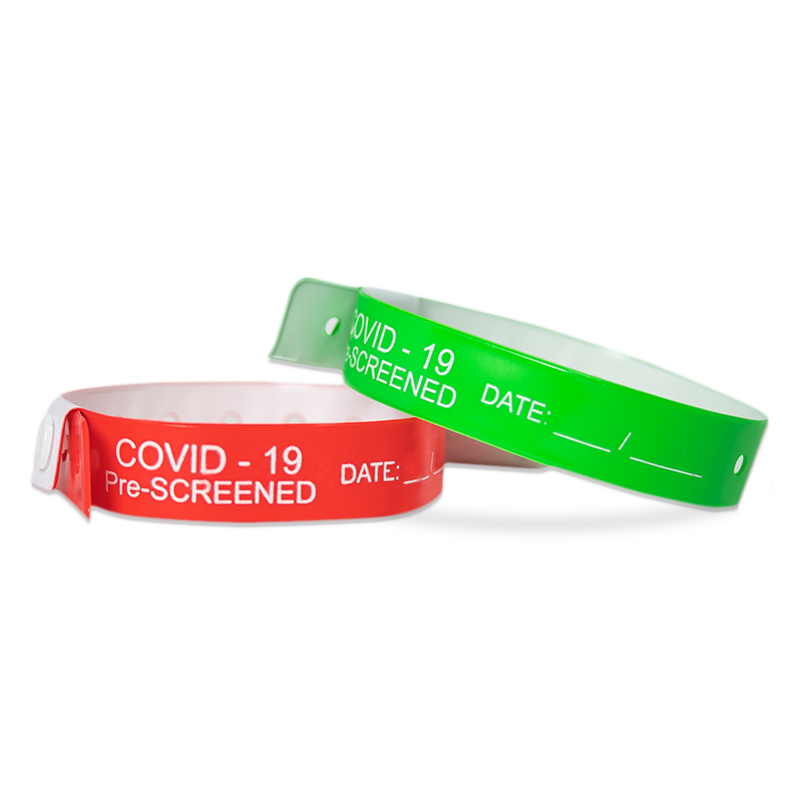
In order to tackle clinic acquired infections, medical id wristbands have to be made of materials suited for healthcare settings in order to minimize the risk of infection transmission. The in store bands have to be sanitized regularly. Hospitals should choose materials for medical alert bracelet that are water resistant and have antimicrobial surfaces. This way, patient wristbands will not have a chance to carry or spread germs.
Scan safe bands:
/cloudfront-us-east-1.images.arcpublishing.com/gray/Q3AFCJ5VJVAO5KS37WP2QCUA4Q.jpg)
During diagnostic and monitoring scans, particularly during an MRI scan, healthcare professionals must ensure that there are no metal objects on the patient. Using silicone, Tyvek or vinyl medical alert wristbands ensure radiologists and others in the radiology department have to worry about one less potential danger when preparing patients for MRIs.
Integrating technology:

Medical ID bracelet data can be integrated with electronic health records and other clinical systems for real time access to patient information. Smart medical alert wristbands equipped with vital sign monitoring capabilities can continuously track patients’ health status.
Patient Engagement:

To successfully implement the use of medical alert wristbands, patients must be educated about the importance of the bracelets and encouraged active involvement in verifying the accuracy of the information on the bands. Patients can further help ensure their own safety by reporting any discrepancies or issues with their medical alert wristbands. Emphasizing the importance of adhering to wristband protocols to patients can help create a smooth health service environment.
Easy replacements of medical wristbands:

Replacement of medic alert bracelets are a possibility for patients for plenty of reasons. By making sure that patients do not go without medical alert wristbands for an extended period of time, quick to change medical wristbands can increase patient safety. Patients are able receive their medical alert bands back more quickly when labels are simple to customize, print, and attach on wristbands.
Designing medical alert bracelets that can guarantee the safety of patients:

In theory, the specifications of medical id bracelets are easy enough to understand. They must be durable, easy to read, be perfectly in sync with medical alert system etc. Essentially, medical id wristband option must be all in one package. However, in the real life healthcare setting, achieving the best medical alert bracelet is a huge undertaking. Most medical alert bracelets or medical id jewelry must sync with medical alert systems cost effectively.
Healthcare professionals must consider the following questions while designing medical alert bracelet or medical alert jewelry or medical id bracelet:
What information to include in medical alert jewelry

Medical information included in medical ids plays a crucial role in the decision of what kind of medical alert bracelet is required for monitoring service. A medical id bracelet must have two forms of patient medical ids- their name and their patient id number. Besides those, blood type, allergies, primary physician, and other information like medical conditions should also be securely included on the wristband. The wristband material itself may also be color coded to convey special cautions or other information. Still more information can be encoded in an RFID chip in the wristband.
The infrastructure of information systems and patient care procedures both influence the wristband content. The more often information must be accessible, the more sense it makes to put the data in text or bar code format on the wristband.
Wide vinyl medical alert bracelets offered at 24hourwristbands.com are perfect to include all kinds of medical information with barcodes, custom patient id numbering or abbreviations. Featuring a wide style of convenient snap designs, wide vinyl extended wear wristbands are perfect for visual identification. These security wristbands can be used for up to weeks without any damage.
Get yours here: https://24hourwristbands.com/shop/products/wide-vinyl-wristbands
Selecting the best medical alert bracelets

When choosing a medical alert bracelet type—Tyvek, vinyl, or silicone—several factors come into play.
Tyvek wristbands are cost-effective and disposable, suitable for short-term use in clinics. They are tamper-evident and water-resistant but may not be as durable as other options.
Vinyl wristbands offer more durability and can withstand water exposure, making them suitable for longer wear. They can be adjusted to fit different wrist sizes and are available in various colors. Vinyl bands are considered the best medical alert bracelets in healthcare settings due to their durability.
Silicone wristbands are comfortable, hypoallergenic, and durable. They are ideal for extended wear and are commonly used for medical alert purposes as they can carry essential health information. However, they might be more expensive than Tyvek or vinyl options.
Caregiving professionals must consider the intended use, duration of wear, budget, and level of comfort when selecting the appropriate wristband type for medical purposes, weighing the benefits of Tyvek’s affordability, vinyl’s durability, and silicone’s comfort.
Get yours here, here & here.
Medical alert bracelet printing options
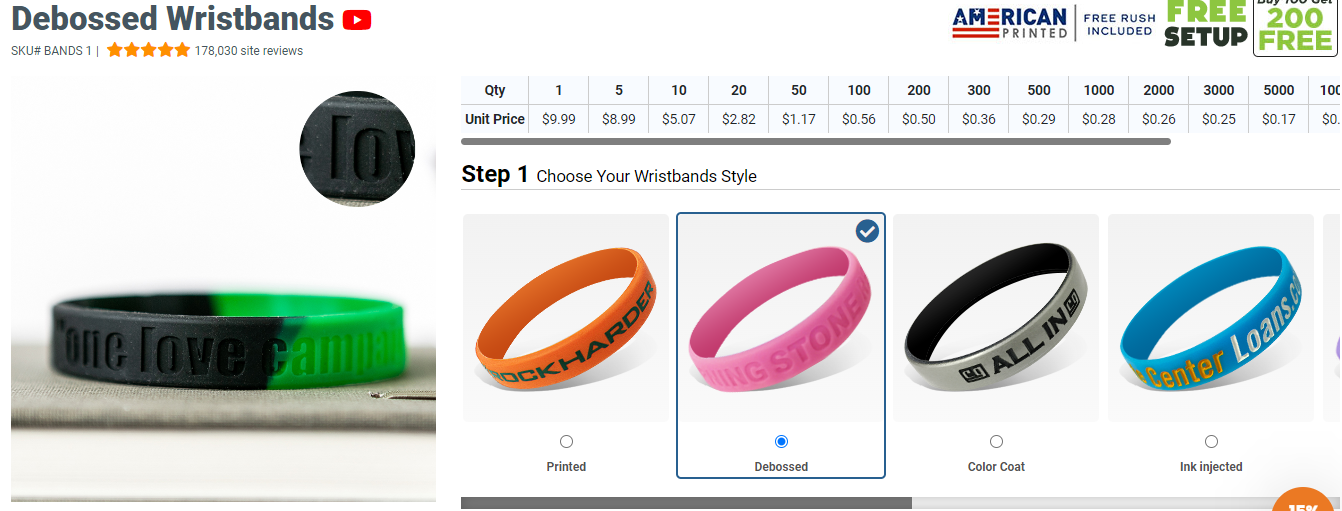
Medical alert bracelets serve as crucial identifiers for individuals with specific medical conditions, chronic conditions or allergies. When considering printing options, several factors come into play.
Debossing involves imprinting the information into the bracelet’s surface, offering durability and a subtle look.
Embossed printing creates a raised effect, ensuring easy readability and a tactile feel. For heightened visibility, the printed option offers clear information, but may fade over time. Color coating enhances contrast and visibility, aiding first responders in emergencies.
Each option presents unique advantages, so selection should align with the wearer’s preferences and medical needs.
Ultimately, the choice depends on balancing legibility, durability, and aesthetic appeal. With any option, the goal remains the same: to provide pertinent medical information promptly, ensuring the safety and wellbeing of the individual wearing the bracelet.
Get yours here, here & here.
Medical id bracelet materials
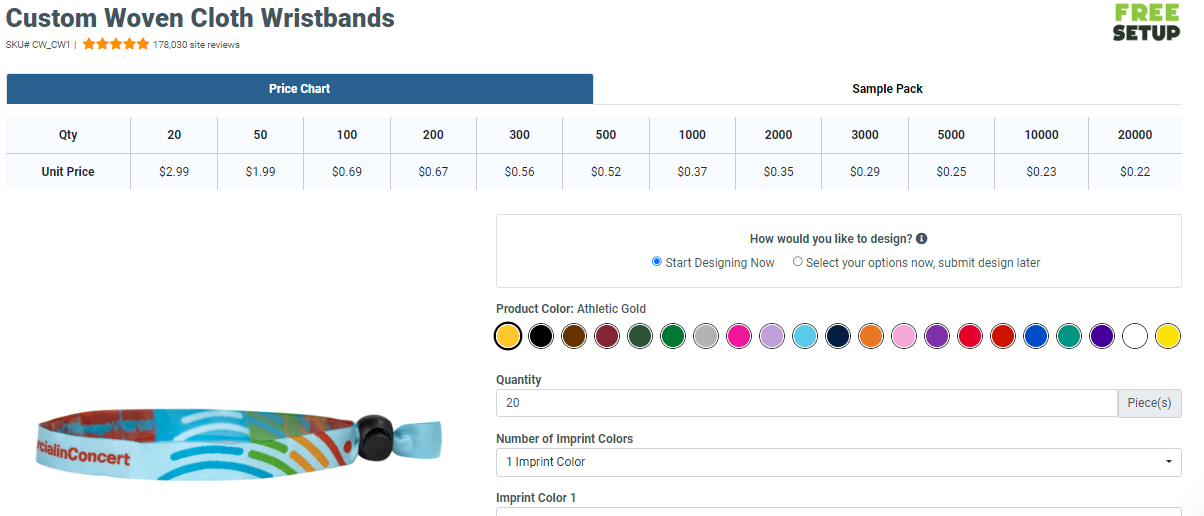
Medical ID bracelets are crucial for conveying essential health information during emergencies. These bracelets are available in various materials to suit both functionality and style preferences. Common materials include stainless steel, sterling silver, gold, titanium, silicone, and woven cloth.
Stainless steel and titanium are durable, hypoallergenic, and resistant to tarnishing, making them ideal for everyday wear. Sterling silver and gold offer a more traditional and elegant look, making them the favorites for stylish medical alert bracelets.
Silicone bracelets are also hypoallergenic, lightweight, flexible, and often preferred for consistent wear. Woven bands are comfortable, quick-drying, and suitable for those with sensitive skin.
When selecting a medical ID bracelet, it’s essential to consider the wearer’s comfort, any potential allergies, and the type of information that needs to be engraved. Ultimately, the chosen material should be both functional and aesthetically pleasing to encourage consistent wear.
Get your woven medical id bracelets here: https://24hourwristbands.com/shop/products/custom-woven-cloth-wristbands
End Note:
In a emergency medical setting, wristband utilization can have a significant impact on patient safety. If employed effectively, there is likely to be improvements in patient outcomes as the rate of medical errors decreases.
The primary strength of medical wristbands lies in their ability to provide accurate and instant patient identification. By incorporating vital patient information such as medical history, allergies, and current treatments into a wearable form, healthcare professionals gain rapid access to critical data that guides their decisions. This instant data retrieval significantly reduces the risk of administering incorrect medications or treatments, a prevalent issue that has plagued medical settings for years. Consequently, medical wristbands actively safeguard patients from potential harm arising from such errors.
Moreover, medical wristbands foster a more organized and efficient workflow. Nurses and doctors can seamlessly update patient information, treatment plans, and test results through integrated digital systems, reducing the likelihood of communication breakdowns. This synchronized approach enhances collaboration among healthcare teams and minimizes confusion, contributing to a safer and more coherent patient care environment.
By harnessing the capabilities of modern technology, these wristbands provide an unprecedented level of accuracy, efficiency, and patient engagement. The potential to mitigate medication errors, streamline communication, and empower patients underscores their significance in contemporary healthcare systems. As the medical field continues to evolve, embracing innovations like medical alert jewelry not only demonstrates a commitment to patient well-being but also exemplifies a proactive approach to leveraging technology for the betterment of society. Through continued research, refinement, and collaboration, medical alert bracelet can revolutionize patient safety and redefine the standards of care.



